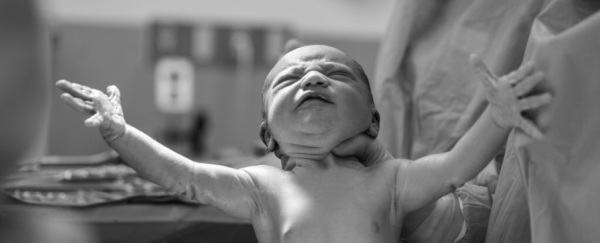The number of babies delivered through caesarian section has skyrocketed worldwide, and public health experts say the trend is cause for alarm.
While c-sections can undoubtedly be a life-saving procedure, a new series of three papers reveals the surgery is being dangerously overused in middle- and high-income countries.
Analysing global trends of birth, the research reveals that the rate of c-sections has nearly doubled since the turn of the century, rising from 12 percent of all births in 2000 to 21 percent in 2015.
If no action is taken, that trend is likely to continue, putting women and children at unnecessary risk.
"Pregnancy and labour are normal processes, which occur safely in most cases," explains lead author of the series Marleen Temmerman, a gynaecologist and professor at Aga Khan University, Kenya and Ghent University, Belgium.
"The large increases in C-section use - mostly in richer settings for non-medical purposes - are concerning because of the associated risks for women and children."
C-sections are crucial when complications arise during birth, like bleeding, foetal distress and abnormal foetal positioning. But like any surgery, this one comes with its risks.
Recovery is far more complex after a c-section compared to a natural birth, and some studies suggest it can increase the chance of death by at least 60 percent and, at times, up to 700 percent.
Furthermore, with each c-section undertaken, a woman is put at greater risk of complications like bleeding, ectopic pregnancies and still births.
"C-section is a type of major surgery, which carries risks that require careful consideration," says Jane Sandall, an expert on maternal health at King's College London.
"The growing use of c-sections for non-medical purposes could be introducing avoidable complications, and we advocate that c-section should only be used when it is medically required."
In other words, the surgery should be used sparingly. It's estimated by the World Health Organization (WHO) that 10 to 15 percent of all births medically require a c-section.
Anything beyond that does not appear to reduce maternal and newborn mortality rates.
Today, however, many countries are failing to meet this recommendation – which is not perfect but does provide guidance.
While the series found 25 percent of countries underuse c-sections, 60 percent of countries were found to overuse it.
"In cases where complications do occur, c-sections save lives, and we must increase accessibility in poorer regions, making c-sections universally available," says Temmerman, "but we should not overuse them."
In North America, Western Europe, Latin America, and the Caribbean, c-section rates have increased by 2 percent per year over the last 15 years. In some parts of the world, they actually outnumber natural births.
China and Brazil have particularly high rates, with most c-sections being used in low-risk pregnancies and among women who have received the surgery before.
Part of this trend is being driven by income and access to health facilities.
Wealth provides a certain privilege, where women can choose to undergo c-sections for non-medical reasons, like fear of labor, pelvic floor damage, and reduced sexual function.
Within low- and middle-income countries, for instance, the series found the wealthiest women were six times more likely to have a c-section compared to the poorest women.
Some medical professionals also have strong financial incentives to push for surgery and are less likely to be sued after an elective c-section.
"Although there is almost universal consensus that c-section use has increased beyond the reasonable level of need in many countries, effective interventions to optimise use have proven elusive," explains Ana Pilar Betran, a key contributor to the series and an expert in public health and obstetrics at the WHO.
In the meantime, WHO has published a guideline alongside the series that explores ways to reduce unnecessary c-sections, including educational intervention for women and families, clinical guidelines, and recommendations for future research.
But even those guidelines are likely to stir controversy, especially if they interfere with a woman's right to choose what happens to her own body.
"What is left unresolved are the tensions generated when women's agency in choosing a caesarean section go against medical directives to intervene against them," says a Lancet editorial published along with the series.
"Although The Lancet Series says that women's demand is not a substantial driver of the current problem of overuse, efforts to reduce caesareans must, nevertheless, strongly respect women's rights to choose the circumstances of birth."
The series has been published in The Lancet.
